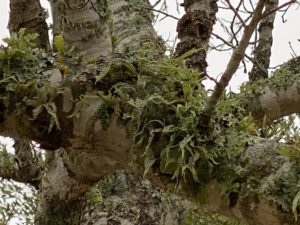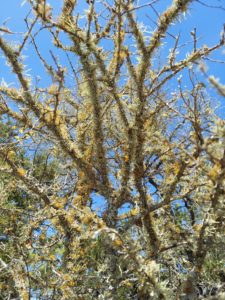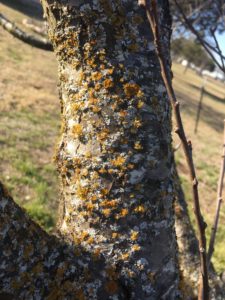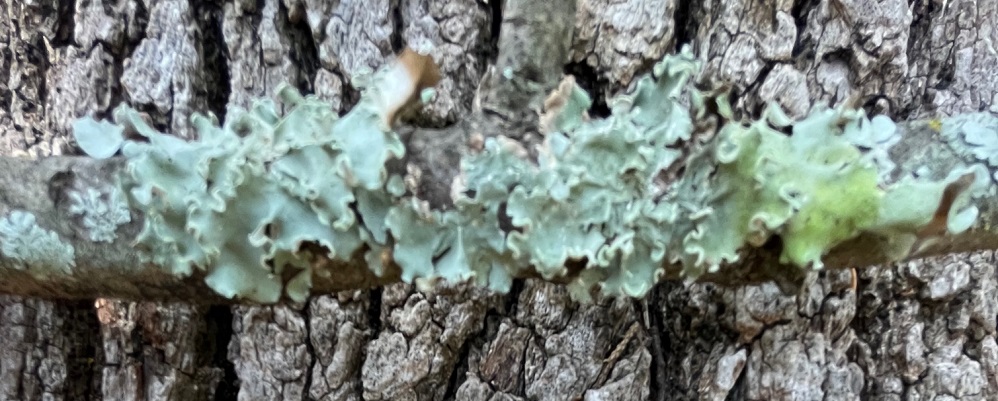
Have you ever wondered what those colorful crusty growths on tree trunks are? You’ll be happy to know that they are not usually harmful, but simply a relationship between three separate species that are mutually helpful to one another. The fungal part of this relationship cannot survive without the availability of photosynthetic products from the other two species, green algae and cyanobacteria.

Lichens grow on trees, shrubs, soil, and rocks and provide additional moisture and protection to whatever they grow on. If a tree or shrub is declining and has an abundance of lichen growing on it, it is an indication of poor tree vigor, usually caused by improper cultural practices or stress.

Since lichens are not considered a plant pest and there are currently no chemicals that control lichen growth, the best way to reduce the growth is to identify what has stressed the tree and focus on increasing growth of the canopy. As the canopy density increases the presence of the lichens should decrease.
Here are some stressors that may contribute to a thinning canopy:
*Use of “weed and feed” products on the lawn surrounding the tree
*Over-pruning of the canopy
*Improper watering. Water deeply all the way to the dripline. Even in the winter!
*Insect infestation
*Leaf spot disease
*Internal disease such as fungal or bacterial infection
*Borer activity (usually affects weakened trees)
*Improper fertilization. We recommend MicroLife organic fertilizer with beneficial microorganisms and mycorrhizal fungi which assist in the uptake of water and nutrients. Avoid high-nitrogen quick release fertilizers.
*Crape Murder-do not allow lawn crews to butcher the trunks and leave stubs.
*String trimmer damage to the base of the trunk.
*Deer rutting damage to bark
*Planting a tree deeper than the original soil line or mounding mulch against the trunk.
Identifying and correcting any of these stressors will go a long way to increasing the vigor of the tree and aid in production of more leaves in the canopy. Now that you know what stressors can cause decline of a tree, you can also act proactively to avoid these stressors in the future.
